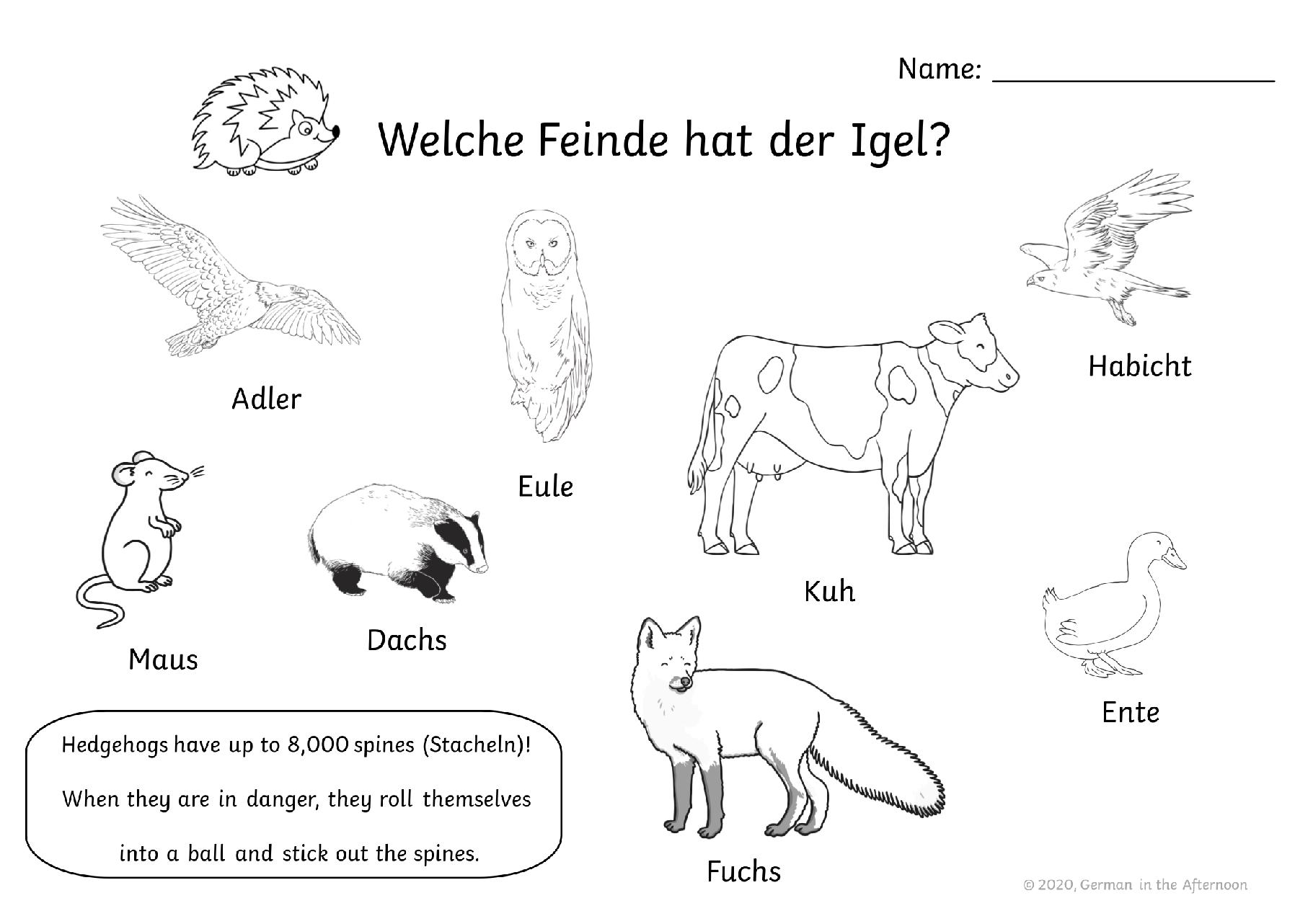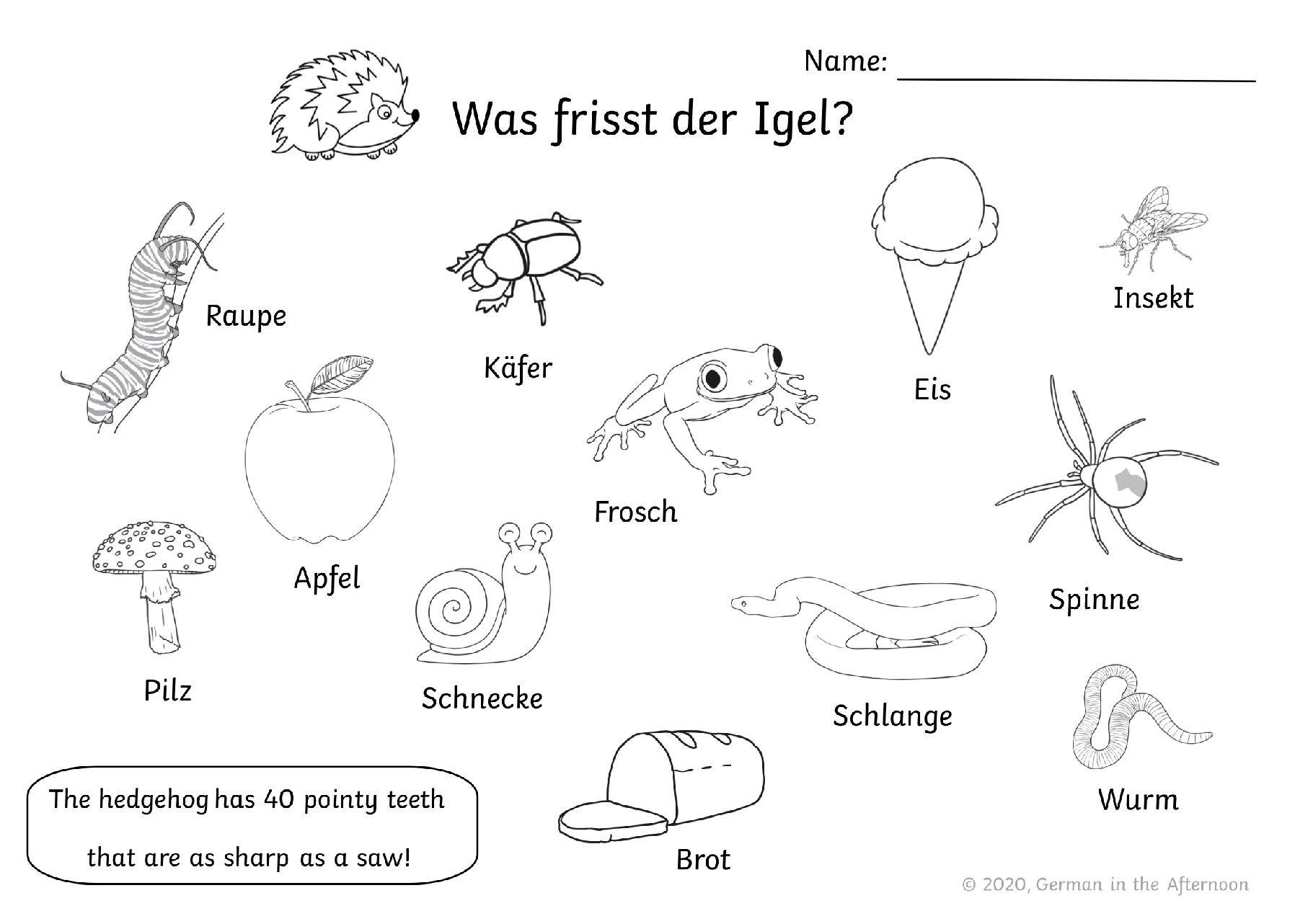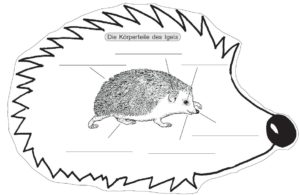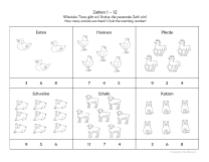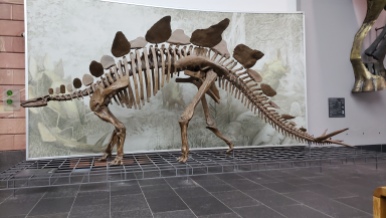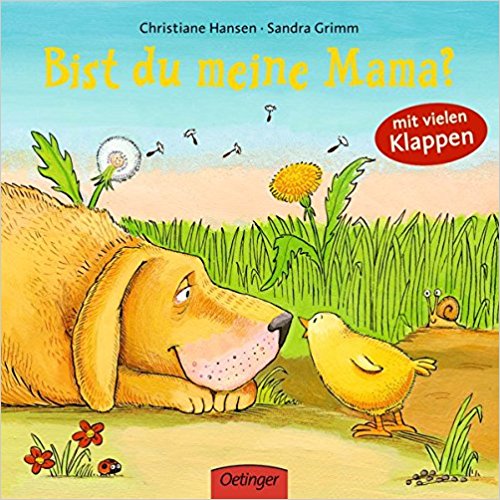Today in Story Hour, we read and sang about vehicles … cars, buses, trains, excavators, fire trucks, tractors, submarines, ships, hot air balloons, rockets, and even soapbox cars!
After reading our books, singing our songs, and doing a finger play, the children created their own little book based on Kikaninchen: Wer fährt heute mit? Each child had a booklet with each of the days and a place to enter which vehicle was used and who got to go along. They could fill in the information (with help from a caregiver) and then add the appropriate sticker to match. Later on, when Froggy (our 7-year-old) heard about the project, he wanted to do one, too. He was able to write the words himself, with some spelling help. Here are two examples:
To assemble the booklet, you print out the two pages, double-sided, and cut them in half. Then you can staple them together to make the booklet. (You’ll need a long reach stapler to get all the way to the middle of the booklet.) Next, print out the stickers on round labels (1 2/3-inch):

You can download both documents here in PDF format. Included in the download is a sheet with specific instructions.
The three books we read were:
- Unser Ausflug. Wir fahren ins Grüne by Chris Embleton & Louise Martin (Parragon, 2008)
- So viele Fahrzeuge im Einsatz by Stefan Seidel (Coppenrath, 2011)
- Kikaninchen: Wer fährt heute mit? (arsEdition, 2011)
We also did a fingerplay (Fingerspiel): “Tatütata” (click on the link to see a video of the fingerplay)
Tatütata – Wer kommt daher?
Tatütata – die Feuerwehr.
Tatütata – Es brennt ein Haus.
Tatütata – die Schläuche raus.
Wasser marsch!
And we sang two songs:
“Die Räder vom Bus”
Die Räder vom Bus, die rollen dahin, rollen dahin, rollen dahin
Die Räder vom Bus, die rollen dahin
Stundenlang
Die Türen vom Bus gehen auf und zu …
Die Wischer vom Bus machen wisch wisch wisch …
Die Hupe vom Bus macht “tut tut tut” …
Der Fahrer vom Bus sagt: “Fahrkarte, bitte!” …
Die Kinder im Bus machen “Blah blah blah” …
Die Leute im Bus, die schaukeln hin und her …
“Mit der Eisenbahn” (2010, von Ottmar Liedl)
Wir fahren heute Eisenbahn
und schauen uns die Welt mal an
Wir machen einen langen Zug
Platz für alle ist genug
Hallo, Du! Du bist dran!
Hallo, Du! Häng dich dran!
Mach die Türe zu
Der Zug, der fährt jetzt ab
Wir fahren heute Eisenbahn
und schauen uns die Welt mal an
Wir fahren jetzt in eine Stadt,
die den Namen Passau hat
Hallo, Du! Du bist dran!
Hallo, Du! Häng dich dran!
Mach die Türe zu
Der Zug, der fährt jetzt ab
Wir fahren heute Eisenbahn
und schauen uns die Welt mal an
Wir fahren bis zur Endstation
Da ist die schon
Save



